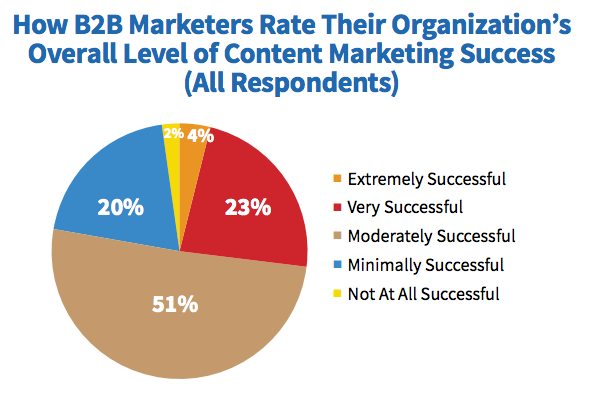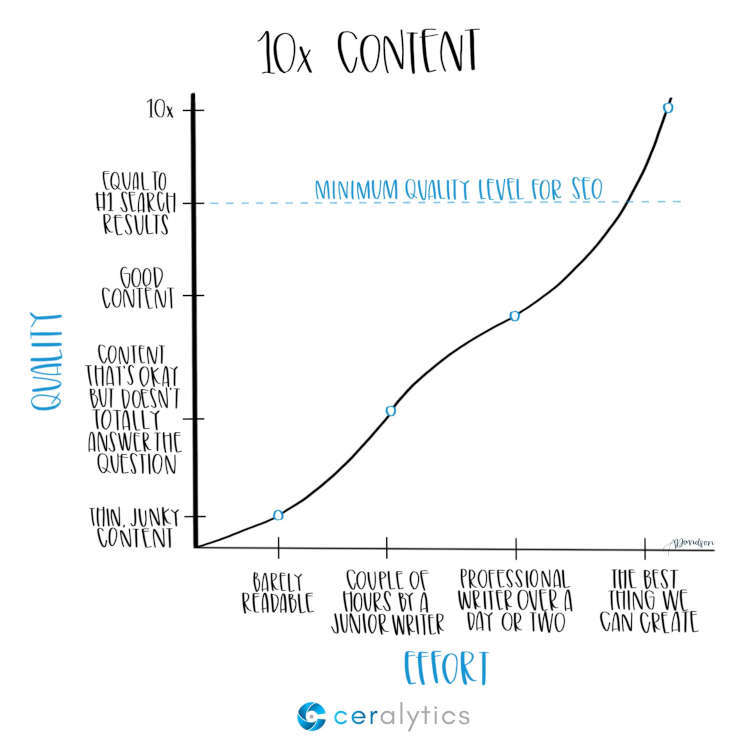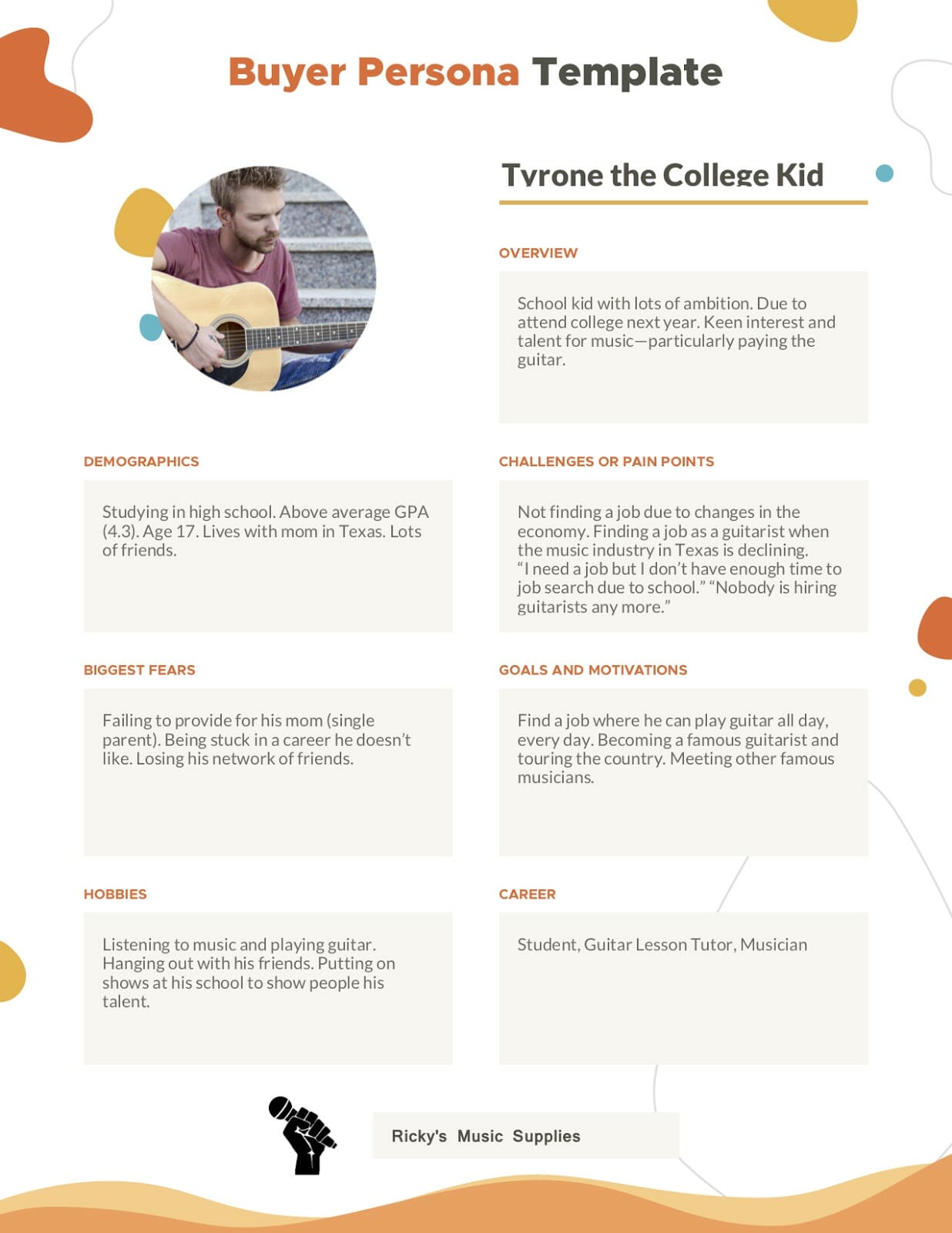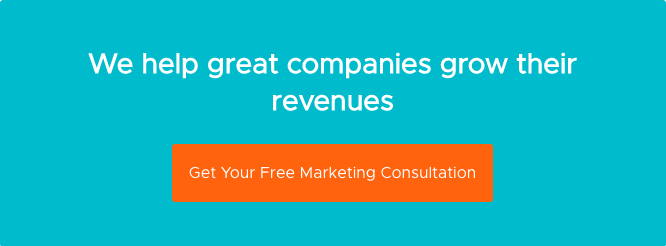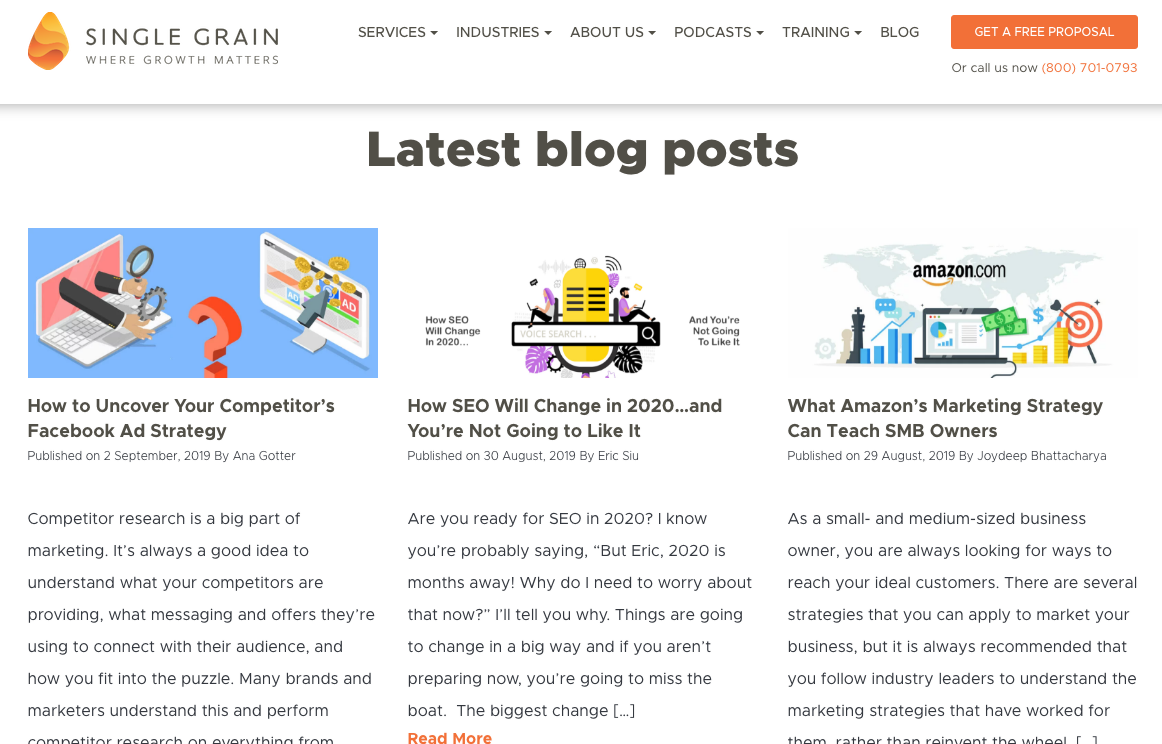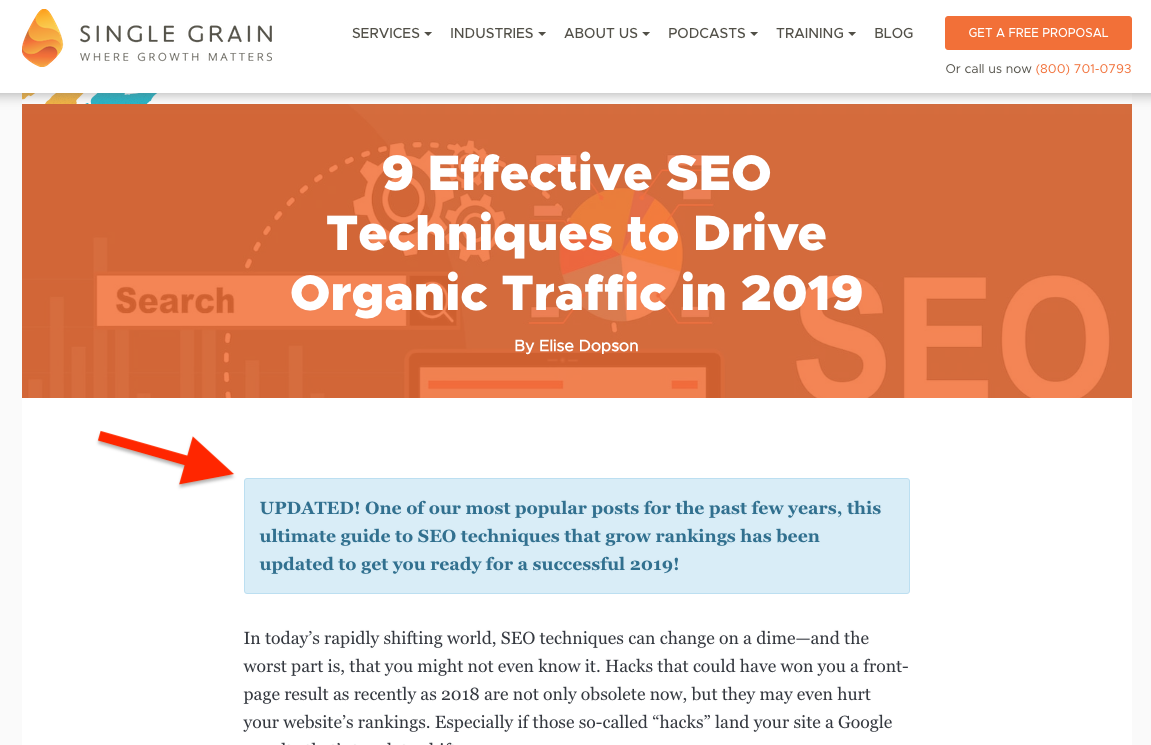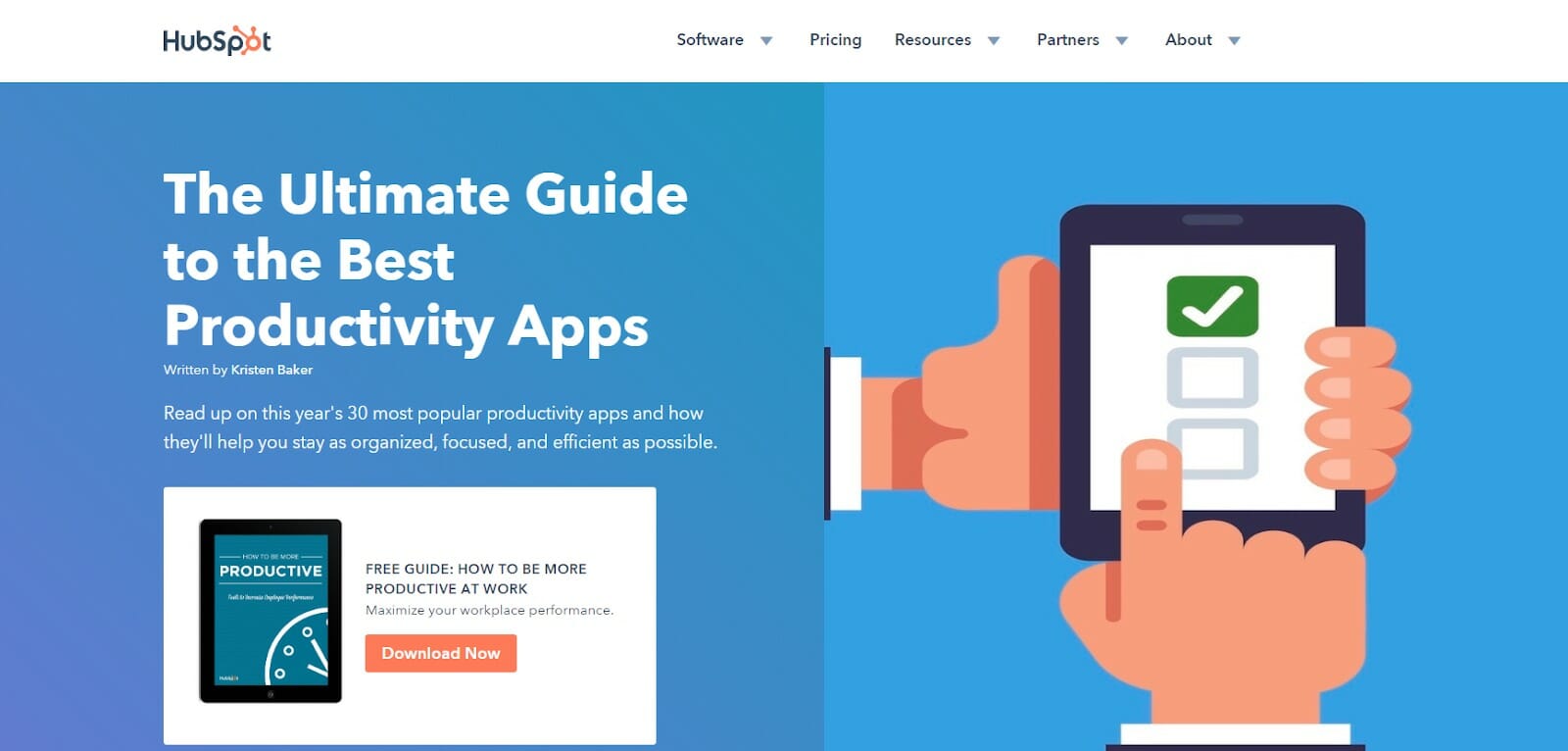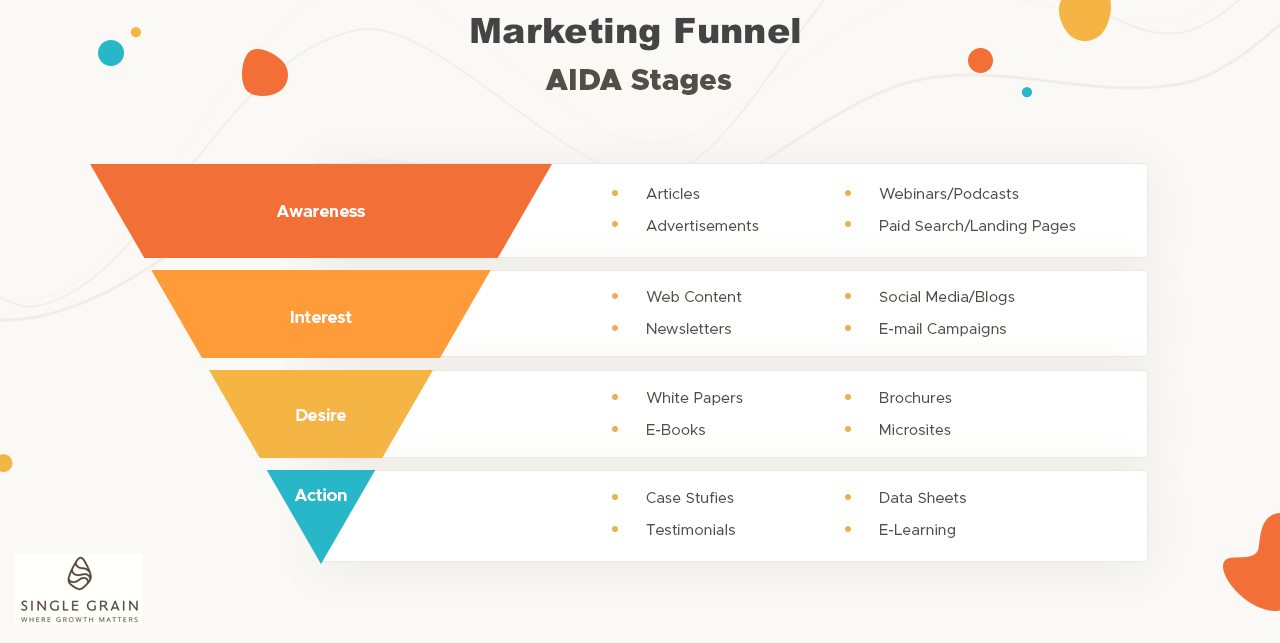5 Steps to Developing Successful Pillar Content
[Free Consultation] Are you spending money on advertising but not getting the results you want? Are you looking for more sales and leads but have no idea where or how to start? Get help from our world-class marketing experts in a free consultation call.
Click Here To Schedule Your Free Consultation Now
It’s no secret that publishing blog posts or articles on your business website is a great way to both build the content needed to enhance your site’s SEO strategy and to connect with your audience on a more personal level. Where many marketers go wrong is prioritizing quantity over quality, and pumping out short content pieces every day because they think it’s going to bring in more traffic.
The Content Marketing Institute reports that 73% of B2B marketers think that blog posts and articles are the most effective content types for demand generation in the awareness stage of the buyer’s journey, or the top of the sales funnel. And yet, only 27% rate their company’s content marketing efforts as extremely successful or very successful. Where’s the disconnect?
The truth is, creating a lot of high-quality content isn’t easy. There’s a big difference between a business blog that’s chock-full of lackluster, uninformative posts and one that’s bursting at the seams with the type of high-value content that naturally draws in readers.
As you’ll obviously have better business results with the second scenario, you need to take the time to create the pillar content that solidifies your blog’s reputation as a go-to source for good content within your industry.
What Is Pillar Content?
Pillar content is content that provides a complete answer to any question a user may be searching for on a given topic. It’s specifically designed to provide value for the reader, and also to rank highly in the search engines.
Another name for pillar content is 10x content, which Rand Fishkin from Moz describes as “content that’s 10x better than the highest ranking result for a given keyword.”
The basic characteristics of pillar content include:
- It solves a problem or answers a question with comprehensive, accurate information.
- It’s different in scope or detail from other content on the subject.
- It’s some combination of trustworthy, useful or interesting.
As it relates to business blogging, pillar content can also be defined as a series of posts that represent your site’s best work. These are the posts you’ll refer new visitors to, as well as the ones that will continue to be useful to readers long after they’re initially posted.
Blog posts and articles are great examples of ideal pillar content, but infographics, videos or other informative pages are also useful content types that can be included on a pillar page to support the topic.
This foundational content provides important knowledge for anyone in your niche and, if done right, can be valuable to your target audience for the foreseeable future, never losing relevance and always achieving a high ranking.
Dive Deeper:
- How to Write Content for People and Optimize It for Google
- Absolutely Everything You Need to Know About 10x Content
- 9 Effective SEO Techniques to Drive Organic Traffic in 2019
Benefits of Pillar Pages
The benefit of pillar pages to users is obvious: it provides all the information they are searching for on a topic in one place. But there are even more benefits for website owners, including:
- Longer time spent on your site’s pages. The more content available for users to consume, the more time they’ll spend doing so.
- A decrease in bounce rate. If users find what they’re looking for on your page, they won’t go back to Google to find another source.
- Backlinks and a ton of social media shares. Pillar pages get shared widely and often, especially among influencers in a given space.
- Gets traffic throughout the lifetime of your blog or website. Pillar content is evergreen content, so its value doesn’t diminish over time.
- A high Google ranking. The high word count, shares and backlinks will all contribute to improved visibility on SERPs.
Because pillar content goes above and beyond standard blog posts, it requires some extra effort to develop. If you’re interested in making use of this potent business tool on your own website, take a look at the following 5-step process for creating your own series of pillar articles.
Step 1: Understand Your Audience
Building pillar content for your personal or business blog might seem like an individual pursuit – after all, isn’t this an opportunity to pour out your innermost thoughts and most meaningful pieces of advice to your readers?
Well, yes and no. Writing pillar content that’s uniquely yours is important, but it’s even more important that the topics you choose to address resonate with your audience members. If you’re counting on these critical articles to represent your business in the best way possible, it’s important that they be of the greatest possible use to your readers.
To do this, you must first understand who your audience is:
Take a close look at your social media analytics tools, Google Analytics and your CRM database in order to answer the following questions:
- Is my audience primarily male or female?
- What is the average age of my audience members?
- Which ethnic groups do my audience members belong to?
- Where are my audience members located geographically?
- What do I know about my audience’s average education level?
- What is the average socioeconomic status of my audience members?
Answering these questions will give you some idea about how to best address your audience within your pillar content posts, but you’ll need to conduct an even more thorough analysis on the following subject before you start writing.
Dive Deeper:
- The Ultimate Guide to Developing Buyer Personas (with Templates!)
- How to Increase Website Traffic through Social Media
Step 2: Identify Your Readers’ Most Pressing Needs
Now that you know who your audience members are, it’s time to uncover the issues that are on their minds, as understanding their pressing needs will help you to develop relevant topics for each of your pillar posts.
There are a number of ways to use your audience to determine the best content ideas:
- Are you a member of your target audience? If so, try to remember how you felt and what you thought about when you were a beginner in your industry. Think about the questions you had and the things you were most desperate to learn, and then use these ideas as the basis for your pillar articles.
- What are your audience members talking about on social media? If you aren’t a member of your own target audience, you can still get a glimpse into their mindsets and interests by monitoring ongoing conversations on social media platforms, especially Twitter (try using Twitter’s Advanced Search) and LinkedIn. Read through your followers’ posts and take a look at which topics are mentioned, which articles are shared most frequently and which messages get shared most often. This information should give you a starting point for producing your pillar articles.
- What types of pillar content do other bloggers in your industry have? If you’re still struggling to come up with topic ideas, take a look at the content pieces from your competitors that are popular. You can perform a competitive analysis using tools like SEMrush and Ahrefs. As long as your audiences are similar, the topics that are playing well on other sites in your industry will likely translate well to your own audience (just be sure not to plagiarize!).
- What kind of presentation would be ideal for your target audience? There are several different types of pillar content with the potential to be high ranking and convey your information, including how-to guides, list-based posts, statistic-based posts, quick reference guides and roundup posts.
- What are your user’s success gaps? In business, there’s a gap between the company’s desired result and the user’s desired result known as the success gap. For example, if you have a productivity app, your desired outcome is to get people to download it and use it. The customer’s desired outcome is to be more productive. Your app alone won’t make them productive – they may have bad work habits, time management issues or be prone to procrastination. Addressing those gaps with content will help your existing customers be successful and also pull in new people who struggle with similar issues – people who are likely to want to use your app.
Because you’ll be investing significant resources into developing your pillar content, give the specific topics you’ll cover some serious consideration before moving on to the next step.
Dive Deeper:
- How to Perform Marketing Competitor Analysis (+ 6 Best Tools Comparison)
- Never Run Out of Ideas: 7 Content Creation Strategies for Your Blog
- 4 Unlikely Sources of Inspiration for Great Content Marketing Topics
Step 3: Create Damn Good Content
At this stage of the process, you should have a few ideas for pillar content pieces that’ll meet your users’ needs, not just now but in the future. Now it’s time to start creating your pillar articles!
As you approach the content creation process, remember that your pillar content articles should be so helpful and engaging that audience members feel compelled to bookmark your page and share them with their friends, family members and colleagues.
The links at the end of this section can help you with the writing process, but these are the main points you’ll need to hit:
- Headline – It’s been said a zillion times before, but remember that 80% of people will read a headline while only 20% will click to read the rest of the blog post. This is the very first thing people will see, so make it catching, intriguing and informative (no click bait!).
- Hook – More good news: even after people click on your article, only 18% of your readers will read the entire thing. Your lede (or hook) — that attention-getter at the start of the blog post — must make the reader want to keep reading. Here are some good hooks:
- Interesting facts that they haven’t heard before
- An anecdote, a cliffhanger, or the end of a story
- A direct question that the reader resonates with
- A current events reference
- Story – People love stories because it creates a human connection based on empathy. Just because you are writing an article and not a novel doesn’t mean you can’t use storytelling techniques in your post about how you built up your podcast to 109K listens per month. 🙂
- Structure – Unless you’re devising a new torture method, don’t force your audience to read a 2,000-word article that has no headers, no images, no bullet points, no paragraphs.
- Research – Have you ever read an article that said something like “Most people own an iPhone”? Sounds legit, but if you do a little research, you’ll find that “62% of first-time phone buyers tend to lean towards Android.” There’s no better way to lose the trust of your readers than to not back up what you’re saying with reputable, up-to-date research. And this goes with quotes, images and stats, too: always, always link to their source.
- Action/Takeaway – Now that you’ve wowed the reader and performed a miracle by getting them to read your entire blog post, you need to tell them what you want them to do. End your piece with a clear call to action, such as “Get Your Free Marketing Consultation” if you’re a digital marketing agency:
Take the time to revise and edit several drafts of your pillar content posts before publishing them – asking yourself each time whether or not the content you’re sharing goes above and beyond what your readers will expect. If you’re just churning out the same content as everyone else in your industry, it’s not worth the effort.
Note: Some people think that because pillar content is so useful, it should be gated, meaning a user has to give an email address or other contact information before they can access it. I think this is the wrong approach. Your pillar page content should be the lead generator. If you have e-books or white papers on a similar topic, by all means promote them from your pillar page. But give away all the value from that page for free. It helps you establish authority and speak directly to people who are most likely to be interested in your product or service.
Dive Deeper:
- How to Write Hero Headlines to Skyrocket Click-Through Rates
- How to Write Lead Nurturing Content: 7 Proven Tactics
- 10 Ways to Generate Topics and Write High-Ranking Blog Posts
- How To Write Data-Driven Posts
- 7 Examples of Storytelling Content You Can Use in Your Marketing Campaigns
- How to Create CTAs that Actually Cause Action
Step 4: Promote Your Pillar Articles Regularly
Once you’ve created and published your pillar articles, the last thing you want to do is let them sit and languish on your website. Instead, keep them in front of your audience by promoting them in a number of different places:
- Link to them from your “About” page.
- Share the content in your online communities and groups. If the members find it valuable they’ll likely share it on their blogs and increase your chances of your content getting more exposure.
- Post to your social channels, and if you have the budget, boost the posts for more exposure.
- Link out to influencers within your blog post and then email each of them to let them know you did so. Also, tag them when you post to your social channels.
- It’s imperative to link to your pillar posts from your homepage whenever possible as it increases visibility traffic and search engine rankings.
- Add internal links within current blog posts – especially popular ones.
- Always add new and best-performing material in your email newsletter.
- Include a list of recent or most popular posts throughout your website, such as a sidebar or at the bottom of a page:
As long as your pillar articles are top-notch and deliver a lot of value, you shouldn’t feel uncomfortable about promoting this same series of posts over and over again. After all, if you’ve carried out your research and content creation processes correctly, these articles should continue to have enduring value to your audience – making them worthy of being shared regularly.
Dive Deeper:
- The Best Paid and Organic Search Channels for 2019
- Paid Content Promotion: A Comparison Of The Different Platforms
- How to Use PPC Advertising to Get the Most Out of the Holidays
- 84 Influencer Marketing Statistics for 2019 [Infographic]
Step 5: Update Pillar Content as Needed
Finally, keep your eye out for any industry changes that require you to update your pillar content.
Proper upkeep is essential for every type of pillar post, as these are the foundations of your entire blog and should always stick out from the rest of your content. Don’t be afraid to be draconian with your editing and check regularly through all your pillar posts to ensure their relevance.
If shifts within your industry make your articles out-of-date or irrelevant, you’ll want to update your content so that it continues to provide excellent value to your audience. This is especially true if you plan to promote your pillar articles frequently, as referring visitors to out-of-date or incorrect information can have a negative impact on your reputation over time.
Updating blog posts on a regular basis also aids in boosting Google rankings. But don’t forget to update the actual date on the pillar content as Google requires that step to recognize that the piece of content has actually been updated. Add a simple note at the top of the piece to indicate that it’s been updated:
Whenever you update a piece of content, promote it throughout all your marketing channels, stressing that it’s new or updated. Those who engaged with it the first time will likely go back to see what’s new, and it will tell your audience that you are an authority in your industry, who stays on top of trends and news.
Examples of Pillar Content
We rounded up three very different approaches to pillar content that you can use to help you think of ideas for your own.
HubSpot: The Ultimate Guide to the Best Productivity Apps
This is billed as a guide post, but it’s really a list post. A long list post. The 30 apps that HubSpot chose to include each get a couple of paragraphs explaining the features, uses and prices of each one. It’s broken into categories like chapters for easy navigation:
Within the post, they promote a gated guide to increasing workplace productivity, using the pillar content as a lead-in to the landing page. It’s smart – someone who reads a whole guide about productivity apps is likely looking for ways to boost their own output. If those people deem this content to be useful and trustworthy, they’ll be ready to give up their contact info for more.
Backlinko: The 2019 SEO Services Report
Original research is usually a slam-dunk when it comes to pillar content, and Brian Dean of Backlinko is a master at that. Bloggers and journalists within your industry are hungry for recent stats on the topics they write about, and if you can give it to them, you’ll get a link in return.
In addition to key takeaways, the information in this Backlinko post is presented in both text and eye-catching visuals:
Single Grain: How to Create the Ultimate Marketing Funnel
Rule #1: Always promote your own content within your other relevant content. 🙂
This is a how-to/guide post, and it’s one of the most popular posts on our site. It gives the reader a step-by-step guide on how (and why) to create their own marketing funnel, and was written after seeing a lack of articles that went into this much detail (although there are more today): 5,400 words and tons of images, including several originals:
We published it a few years back, but keep it updated regularly (and let people know when we do an update). We also try to include different content types within our pillar content, like the above video on a closely related topic.
Dive Deeper:
- How to Create the Ultimate Marketing Funnel (Templates Included)
- How to Guide Your Customers Through the Marketing Funnel with Interactive Content
- How to Think Like an Investor to Win at Content Marketing in 2023
Pillar Content Pays Off
So overall, while it may take significantly longer to create your pillar content posts compared to the shorter blog posts you crank out on your business blog, you should find the extra search and referral traffic to be well worth the effort. It’s worked for us, and if you do it right, it will work for you, too.
